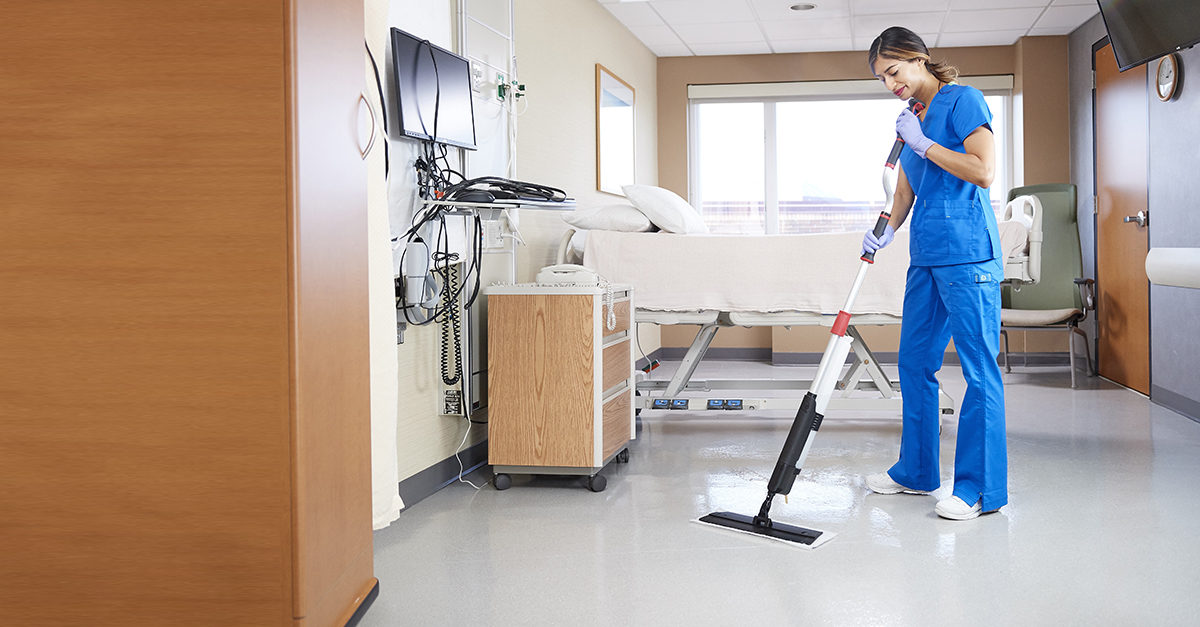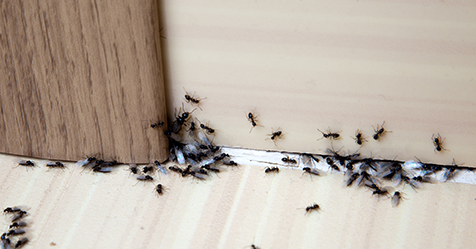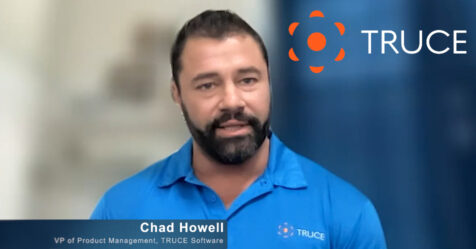When faced with any infection challenge, preparation is key. While we collectively experience the uncertainties of infectious illnesses, there are steps we can take to feel more prepared should harmful pathogens impact our facilities. During difficult times, facility managers need to audit their current cleaning strategies to determine ways to minimize cross-contamination and create a solid cleaning, disinfecting, and sterilizing routine to proactively combat the challenges associated with infection prevention.
Facility managers and their staff are often the first line of defense for infection prevention. They are tasked with ensuring all spaces stay properly cleaned and disinfected. To be successful, managers should integrate the following best practices into every cleaning program to achieve optimal results and minimize cross-contamination.
Control the spread by cleaning
Cleaning and removing visible debris, dirt, and dust from surfaces and objects is a critical first step to preventing cross-contamination. It’s important to remember that you should always clean before disinfecting or sanitizing surfaces. The goal is to remove visible impurities, decrease the spread of infection, and prime the space for disinfection and sanitization efforts. Since many viruses, including the flu, can live on surfaces for up to 48 hours, daily cleaning is critical.
To start, identify “hot spots” or high-touch surfaces and objects in your space that can harbor pathogens, such as doorknobs and front desks. Then, make dusting the first step of your cleaning routine. When selecting dusting products, equip your cleaning staff with tools that trap, collect, and discard dirt, dust, and hair as opposed to products that simply redistribute debris. Once dusting is through, mopping can commence.
When it comes to mopping, utilizing a disposable mop pad rather than a washable mop is one simple way to control the growth and spread of harmful microorganisms, keep visitors safe, and avoid costly infections. Washable mop pads are made of various materials, such as microfiber and cotton, and are laundered for repeated use. However, washable mop pads and simple string mops, even after careful laundering, can still spread germs during the cleaning process. A 2013 study conducted in Arizona hospitals has shown that washable mop pads often do not return to a state of necessary cleanliness after washing and can harbor dangerous bacteria that contribute to cross-contamination. On the other hand, disposable mop pads are single-use by design but offer comparable cleaning results to washable pads.
Destroy pathogens by disinfecting
It is not enough to just dust and clean with a mop and soap. Implementing a disinfection routine is also crucial. Disinfecting often involves the use of chemicals on surfaces or objects to kill germs that cause infections. Selecting the right disinfection products for your facility is key. You must consider the types of surfaces in your space, product dwell times, and the types of microbes you intend to mitigate.
Once you select the right product, the next step is to ensure you’re using it correctly, paying special attention to U.S. Environmental Protection Agency (EPA) labels to understand the mandatory dwell time and the dilution factor associated with the product. Dwell time is important because if the product is removed too soon, it may not adequately kill the pathogens. Inaccurate dilution can lead to problems too. Under-dilution uses too much product and not enough water, which not only has financial implications but could also damage surfaces and endanger the person using the product. Conversely, too little product, or over-dilution, can lead to an ineffective cleaning process, which exposes your visitors to dirt and germs and heightens the risk of cross-contamination. A chemical management system can help you simplify the process by ensuring proper dilution and application.
Most cleaning staff disinfect dispensers, railings, and countertops daily to reduce cross-contamination. However, floors are of increased interest as they are one of your largest high-touch surfaces and can become contaminated through contact with shoes and other objects, spills, and residual airborne pathogens. Facility visitors also contribute to the spread of germs when they place handbags or other personal items on the floor and then move them to a table or other high-touch area. In consequence, even though you may not immediately consider floors a high-touch surface, they are still a potential hotbed of bacteria if not cleaned and disinfected properly.
Stop cross-contamination by sanitizing
Sanitizing uses heat or antibacterial chemicals to reduce germs, bacteria, and other microorganisms on pre-cleaned surfaces or objects. Make sure to sanitize high-touch areas on an ongoing basis. Since we cannot see the bacteria and microorganisms that make us sick, it is important to sanitize all touchable, nonporous surfaces like floors, tables, and textiles consistently to lessen the probability of spreading illness.
Preventing cross-contamination is the goal of the cleaning, disinfecting, and sanitizing process. Fortunately, it doesn’t have to be intimidating, as following the best practices outlined above can help to ensure the health and safety of your facility. With the rising costs linked to pathogens, facility infection prevention practices are increasingly important to keep visitors healthy and costs down.
As unfortunate and unpredictable as infectious diseases can be, facility managers can learn from them and make conscious choices that keep their facilities safer in the long run. These lessons can lead to improvements in facility protocol and procedures which can, in turn, help facility managers better prepare for future outbreaks. As we know, it is not a matter of “if,” but more realistically, “when” the next emerging pathogen will make its way to the scene. Will you be ready for it?




